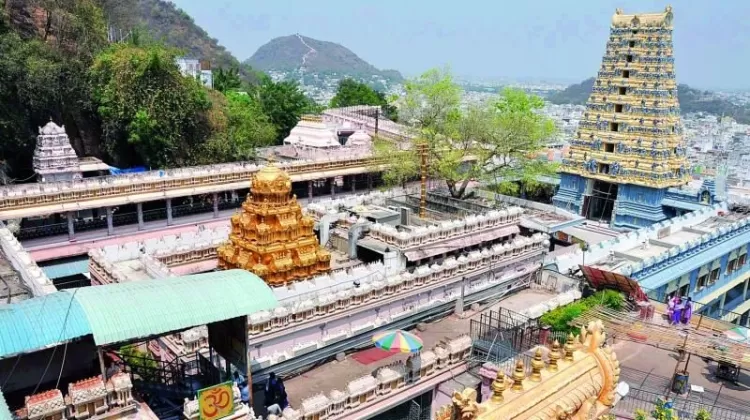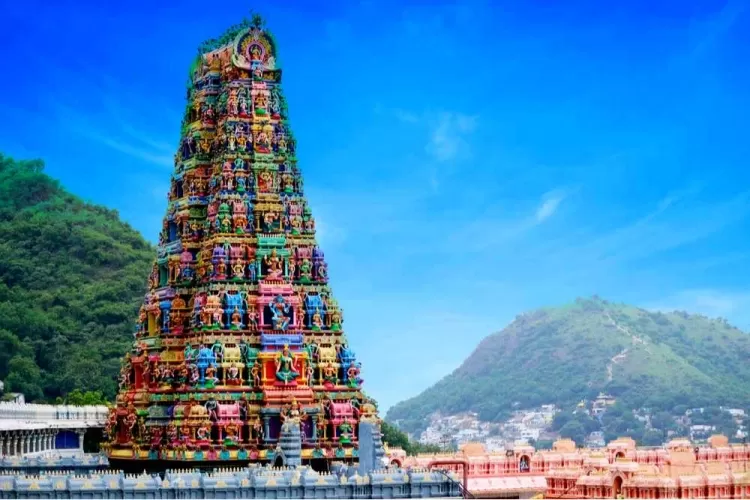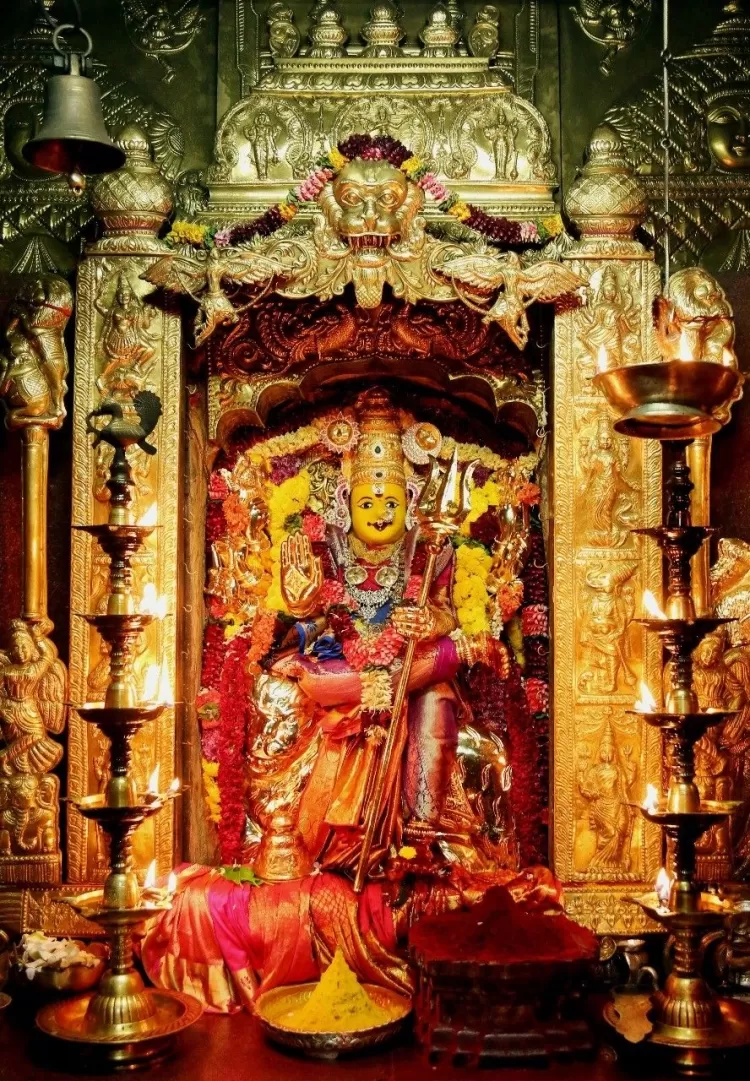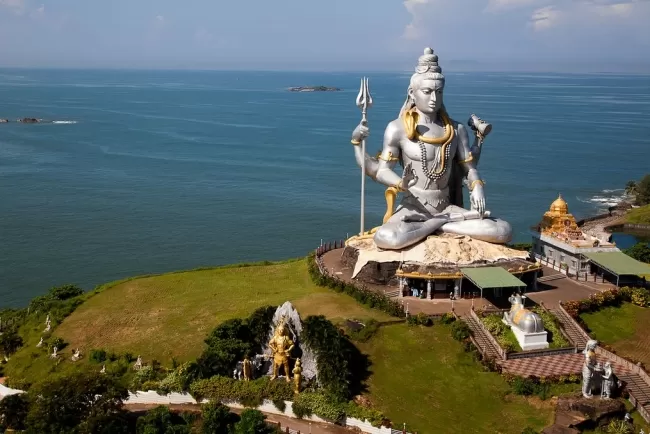"Durga: The Divine Protector"
The Kanakadhurgamma Temple in Vijayawada is a revered spiritual destination, offering both a place of worship and an immersive cultural experience. With its rich historical background, remarkable architecture, and spiritual importance, the temple is a must-visit for pilgrims and tourists alike. Whether seeking divine blessings, exploring the vibrant culture of Andhra Pradesh, or simply looking for a peaceful retreat, the Kanakadhurgamma Temple is a sacred site that offers something for everyone.

The Kanakadhurgamma Temple, situated in Vijayawada, Andhra Pradesh, is one of the most revered and prominent temples in the region. Dedicated to Goddess Kanakadhurgamma, a manifestation of Durga, this temple is not only a vital religious center but also an architectural gem, attracting thousands of devotees every year. Perched atop the Indrakeeladri Hill, the temple offers a tranquil and scenic setting that enhances its spiritual significance.
Historical Background
The Kanakadhurgamma Temple has a rich and ancient history, though its exact origins are not clearly documented. The temple has been a place of worship for centuries, with the name "Kanakadhurgamma" deriving from "Kanaka," meaning gold, and "Durgamma," referring to the goddess Durga. According to legend, Goddess Durga manifested as Kanakadhurgamma to protect her devotees and grant them blessings of prosperity and safety. The temple has long been a center of devotion, particularly during Dussera (Navaratri), when large crowds of worshippers come to honor the goddess.
The temple's importance grew significantly during the Vijayanagara Empire, with royal patrons contributing to its restoration and expansion. In the 20th century, the temple was developed further to cater to the increasing number of pilgrims, solidifying its status as a prominent pilgrimage destination.
Temple Architecture
The architecture of the Kanakadhurgamma Temple reflects traditional South Indian temple styles. Located on Indrakeeladri Hill, part of the Eastern Ghats, the temple is accessible by a steep climb of 1,000 steps. For those who prefer an easier route, a ropeway is available. The climb itself is a spiritually uplifting experience, offering breathtaking views of the surrounding landscape and the city.

The temple is adorned with elaborate carvings and sculptures of various Hindu deities and scenes from Hindu mythology. Inside the sanctum sanctorum, the idol of Goddess Kanakadhurgamma stands majestically, adorned with gold jewelry and believed to possess immense power to fulfill the wishes of devotees. The atmosphere surrounding the idol is one of deep reverence and devotion.
The entrance to the temple is marked by a grand "Raya Gopuram," a towering structure commonly seen in South Indian temples. This tower is decorated with vivid sculptures of gods and goddesses, showcasing the artistic heritage of the region. Additionally, the temple’s walls are embellished with depictions from Hindu mythology, including the goddess's triumphs over evil forces.
Spiritual Significance
The Kanakadhurgamma Temple holds immense spiritual significance, especially for the people of Andhra Pradesh and nearby areas. It is believed that the goddess protects her devotees from harm and fulfills their desires. The temple is particularly important during the festival of Navaratri, which honors Goddess Durga and celebrates the victory of good over evil. During this time, the temple sees an influx of pilgrims who come to offer their prayers and seek the goddess’s blessings.
One of the temple’s key rituals is the "Kanaka Abhishekam," a special offering of gold to the goddess. Devotees believe that this offering brings prosperity, good health, and success. The temple is also renowned for its association with wealth and good fortune, further enhancing its appeal among worshippers.

Festivals and Celebrations
The annual Dussera (Navaratri) festival is the most significant event at the Kanakadhurgamma Temple. This nine-day festival celebrates Goddess Durga’s victory over the demon Mahishasura and culminates in Vijayadasami. The temple becomes a hub of spiritual activities, rituals, and cultural events, drawing visitors from across the state.
In addition to Navaratri, other festivals such as Sankranti, Ugadi (Telugu New Year), and the goddess's birthday are also celebrated with great enthusiasm. These festivals are marked by grand processions, special prayers, and cultural performances, creating a vibrant and festive atmosphere that attracts both devotees and tourists alike.
Accessibility and Facilities
The Kanakadhurgamma Temple is conveniently accessible by road, with Vijayawada serving as a major transportation hub. The city is well-connected by rail and air, making it easy for devotees to reach the temple. The temple's hilltop location offers stunning views of the Krishna River and the city, further enhancing the experience for visitors.
To accommodate the large number of pilgrims, the temple provides a range of facilities, including waiting areas, restrooms, and a temple shop where devotees can purchase religious items. The temple administration ensures a smooth experience for visitors, assisting with rituals and prayer services.
What's Your Reaction?

















